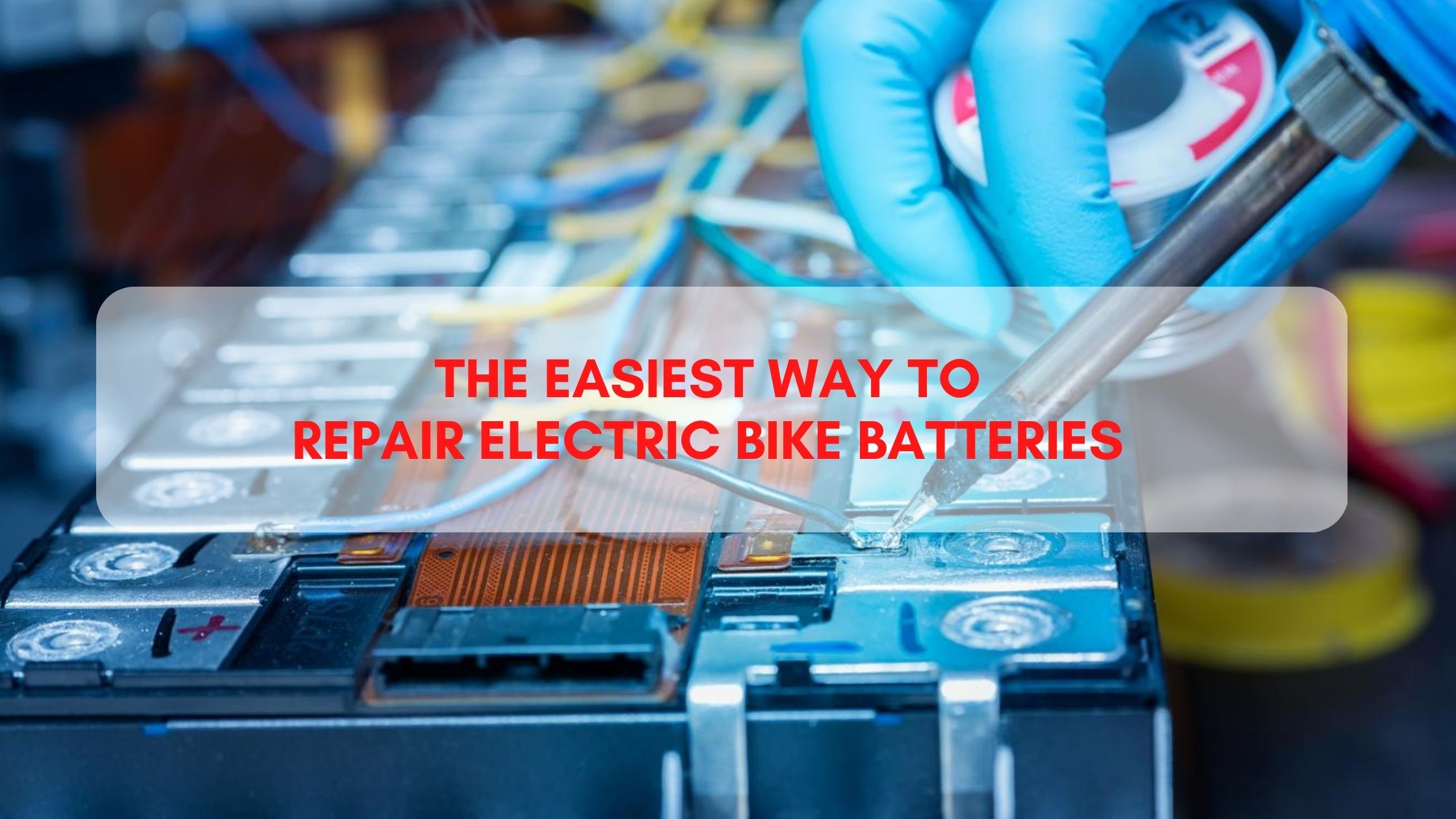Electric bikes are popular for cyclists looking for that extra pedal power boost when needed. Still, that extra power comes from a piece of expensive equipment, the electric motor, and a battery.
The easiest way to repair electric bike batteries is to assess whether the battery can be fixed or replaced. Then see if the battery’s electronic management system (BMS) is faulty due to loose wires, burnt contacts, or dry joints. Also, test the BMS output of the charger using a voltmeter.
Chargeable lithium batteries are integral to any e-bike. Unfortunately, they are also usually the first component to go bad and are expensive to replace. While major repairs are not recommended and are potentially dangerous for the average person, minor repairs are possible by following some simple rules.
How Long Is The Life Of An Electric Bike Battery?
Batteries are chemical devices; this means that they are prone to degradation over time. A new or well-cared-for bike battery should last around 3 to 5 or even eight years. It depends on the make and quality of the battery.
This battery life equates to roughly 2000 to 3000 charging cycles. In other words, you should get good or adequate performance from 2000 to 3000 full recharges. An average quality battery needs to last at least 1000 charge cycles.
The range or maximum distance traveled for each charge cycle depends on the bike’s make or model, the rider’s weight and driving style, and even other factors such as road and tire conditions.
Factors That Cause Electric Bike Batteries To Fail
E-bike batteries are not generally very robust and are exposed to a lot of vibration, especially when the bike spends a lot of time traversing bumpy or uneven road surfaces.
For this reason, batteries should always be properly secured to ensure that they don’t rattle or bounce around, causing damage and potentially shortening their lifespan.
Batteries are also susceptible to extreme temperatures. Read the manufacturer’s specifications and keep your batteries within the recommended temperature range to ensure optimum performance and maximum lifespan.
When not used overnight, particularly in winter, park the bike indoors or in a garage if possible. The same applies when it is sweltering or it rains. E-bike batteries are water resistant, not waterproof, so try to keep the bike as dry as possible.
How To Repair An Electric Bike Battery?
Most rechargeable batteries come with a BMS, an electronic management system that manages battery packs or cells.
Apart from its primary function, protecting the battery from overcharging and damaging the battery cells, it also provides valuable data indicating battery health.
The BMS can go faulty, causing the battery to stop charging. It may also fail if wires have popped loose due to dry solder joints or burnt contacts.
Another common cause of BMS failure is an inability to balance the battery due to an individual cell that’s gone faulty.
- First, test the output of the charger using a voltmeter. These can be purchased cheaply at most DIY or hardware stores.
- Next, check across the output pins that lead to your battery cells. It should measure in the region of around 54V or 58V, for example, a little higher, for a 48V battery.
A dead charger could be due to tripping. Most BMSs come with a mini circuit breaker or even a fuse. Try manually resetting the circuit breaker or replacing the fuse should that be blown. A fuse can be easily removed and tested with the voltmeter for continuity.
If all the wires are intact, individual cells test fine, there are no burn marks, and you’ve reset the BMS, it might be time to replace the unit.
You can easily find an inexpensive BMS online, ensuring it is rated correctly for your battery pack.
They typically come in 24V, 36V, 48V, or 52V. Make sure the BMS is a 10s for batteries with ten cells in series. The parallel battery layout is not critically important, only the series.
Also, check that the connector will work with your battery’s wiring harness and is secured tightly.
Use a soldering iron to remove wires connected to the BMS output and reconnect to the new BMS. It is also an excellent idea to ensure the battery cells are fully discharged before doing this. Finally, reconnect the BMS harness; you should be good to go!
The Cost Of Repairing A Battery Is Usually A Fraction Of The Cost Of Replacing The Entire Pack.
Not all E-bike batteries are created equal. So while you can find dozens of websites advertising batteries at a steal, you need to figure out what you’re getting.
There are massive differences in battery quality, which will reflect their cost. Buy only from reputable dealers.
E-bike batteries make up for around 30% to 40% of the total cost of the bike, and prices range between $500 to $800.
The brand, quality, and capacity are all factors that determine the price. Unless your battery pack is too old and degraded, try fixing it before forking out for a new one.
What Are Your Options When You Need A New Battery For Your Electric Bike?
Battery quality is not a factor that the naked eye can accurately see. If in doubt and your budget allows, always source a replacement battery from the original manufacturer.
Buying new will ensure that you get the right battery for your bike and will include a warranty period.
Your best recourse would be to contact the dealer from where you bought the bike. If you purchased it 2nd hand, however, or there is no dealer nearby, you should be able to contact the manufacturers or distributors directly.
If the company no longer exists or the model has been discontinued, contact a reputable bike dealer for a suitable replacement. Do not simply order the cheapest battery you can find online.
Safety And Maintenance Tips
As with all electrical devices, batteries can pose a fire danger. Check your batteries regularly for overheating. If they look or smell burnt, replace them immediately.
Always use the battery charger that came with your bike or a compatible model. Use slow charging where possible.
Remove the battery when transporting your bike or placing it in longer-term storage. Store the battery at room temperature in a dry environment. Extreme heat, cold, and moisture are all bad for your batteries.
When storing for a longer term, ensure the batteries are fully discharged and do not cover or wrap them, keeping away from flammable materials and being out of reach of children and pets. The same applies when charging your batteries unattended.
If you are unsure whether your battery is functioning correctly and safely, disconnect and take it to a bike dealer to get tested. Most bike shops have the necessary equipment to test batteries properly.
Conclusion
With increasing global awareness of emissions controls and the impact of e-waste, it might be tempting to try and repair or upgrade a lithium e-bike battery rather than buy a new one. However, considering that the cost saving might seem like an additional advantage, there is a point of no return, and replacement is sometimes the only safe bet.



